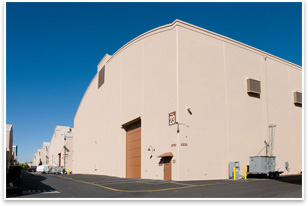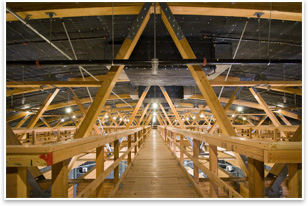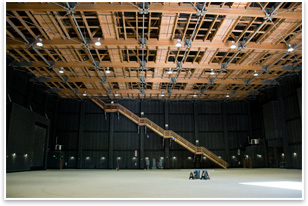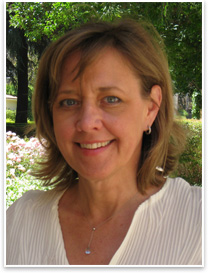
| Warner Bros. Green Sound Stage First for Major Hollywood Studio
Summary: Warner Bros. Entertainment in Burbank, Calif., recently completed what is said to be the first green sound stage built by a major Hollywood studio. The company’s 21,600-square-foot Stage 23 is pending LEED™ certification and incorporates numerous sustainable elements including use of sustainable, reused, and recycled construction materials and a solar electrical system now being installed. Warner Bros. Corporate Real Estate group and Construction Services departments were project managers, and HLW International was the project architect.
The concept for Stage 23 was initiated about two years ago. “We felt it would be great to try a new building program that doesn’t have a specific, easy niche in the LEED rating system,” she says. “It’s an unusual building with no daylight. It‘s a warehouse type of building and functions differently. To try to fit that use into the LEED rating system we had to come up with distinct and clear definitions of how to place a new building type that wasn’t contemplated in the LEED rating system. I think it helps because we are an industry that really does care about sustainability. That was something we needed to tackle, not only for us but for the industry—how do you build a green stage?”
Stage 23 has fly ash in its concrete foundation, and the perimeter has porous asphalt for drainage to prevent runoff into the Los Angeles River. The sound stage has energy-efficient fluorescent house lighting, recycled steel and metals, and non-toxic paint and adhesives. Warner Bros. also worked with the city on incorporating condensers inside for daytime cooling, offsetting energy use from off-peak hours. There is a reflective roof, and solar panels are being installed. The panels will form a 100-kilowatt solar electrical system for generating clean energy. Warner Bros. Studio also expanded its solar electrical system, which will now generate more than 500 kilowatts of clean energy.
Bauza sees continued sustainability for Warner Bros. “We are a campus environment, with 100 acres on our main lot and 60 acres on our ranch lot. We have many types of buildings. As we have the opportunity to build and remodel each of those different types of buildings, we are always asking ourselves how we can do the right thing with sustainability and energy conservation. It is good for the company, for the people, and for the bottom line.” |
||
Copyright 2009 The American Institute of Architects. All rights reserved. Home Page |
||
news headlines
practice
business
design
recent related
› Fourth DOE Solar Decathlon Set for October in
Washington, D.C.
› Value of the Architect in Sustainable Design Practice
Learn more about Warner Bros.’ Environmental Initiatives.
See what the Committee on the Environment is up to.
Photo Captions:
1. Stage 23 is built from sustainable, reused, and recycled construction materials.
2. Stage 23 uses Forest Stewardship Council-certified lumber for its trusses.
3. The sound stage has energy efficient fluorescent house lighting, recycled steel and metals, and nontoxic paint and adhesives.
4. Rasa Bauza, AIA, director, Design & Construction, Corporate Real Estate, Warner Bros. Entertainment. Bauza was the lead on the Stage 23 project.
Photos 1-3 courtesy of Warner Bros. Studios.

 How do you . . .
How do you . . .  Finding the green niche
Finding the green niche Sustainable lumber among the green design elements
Sustainable lumber among the green design elements Pursuing LEED for actual construction
Pursuing LEED for actual construction